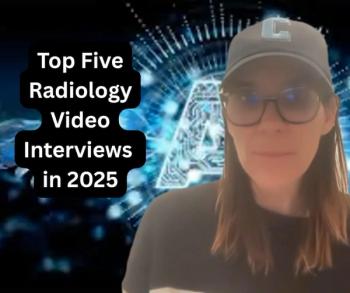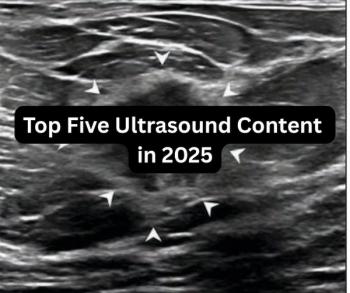
Diagnostic Imaging's Weekly Scan: March 26, 2021
Chest X-ray and Chest CT for TB Detection; Contrast-Enhanced Mammography for Women with Breast Implants; Risk-Based Approach to Optimizing Mammography During Crisis; Plus, Natural Language Processing for COVID-19 Case Volume Prediction
Welcome to Diagnostic Imaging’s Weekly Scan. I’m senior editor Whitney Palmer.
Before we get to our featured interview with Dr. Ricardo Cury of Radiology Associates of South Florida, a Radiology Partners practice, about the use of natural language processing to predict the number of COVID-19 cases, here are the top stories of the week.
Tuberculosis is, thankfully, rare in the United States, but recent reports show the decline is cases is starting to slow. That makes quicker, earlier detection a must. In a new study published in
A new study has shown that contrast-enhanced mammography performs equivalently to breast MRI in women who have breast implants. The results published in the
It’s well known that mammography screening mostly came to a screeching halt at the beginning of the COVID-19 pandemic, and providers struggled to determine who to bring in for screening and how to do it. The American College of Radiology and the Society of Breast Imaging did offer guidance, but now a new approach might be available – a risk-based algorithm. According to investigators led by the University of California at Davis, using clinical indicators and a patient’s personal history with breast cancer can help providers pinpoint which patients to bring in for screening, ultimately catching the most cancers with the fewer studies. Based on their results, published in
And, finally, this week, Diagnostic Imaging spoke with Dr. Ricardo Cury, chairman of radiology at Radiology Associates of South Florida and director of cardiac imaging at Miami Cardiac and Vascular Institute, about the use of natural language processing to evaluate COVID-19 chest CT reports. Based on an investigation with more than 400,000 chest CTs, Cury and his colleagues built a prediction model that can accurately estimate official COVID-19 case counts on a daily, weekly, and state-by-state basis. Here’s what he shared.
For more coverage based on industry expert insights and research, subscribe to the Diagnostic Imaging e-Newsletter
Newsletter
Stay at the forefront of radiology with the Diagnostic Imaging newsletter, delivering the latest news, clinical insights, and imaging advancements for today’s radiologists.




























